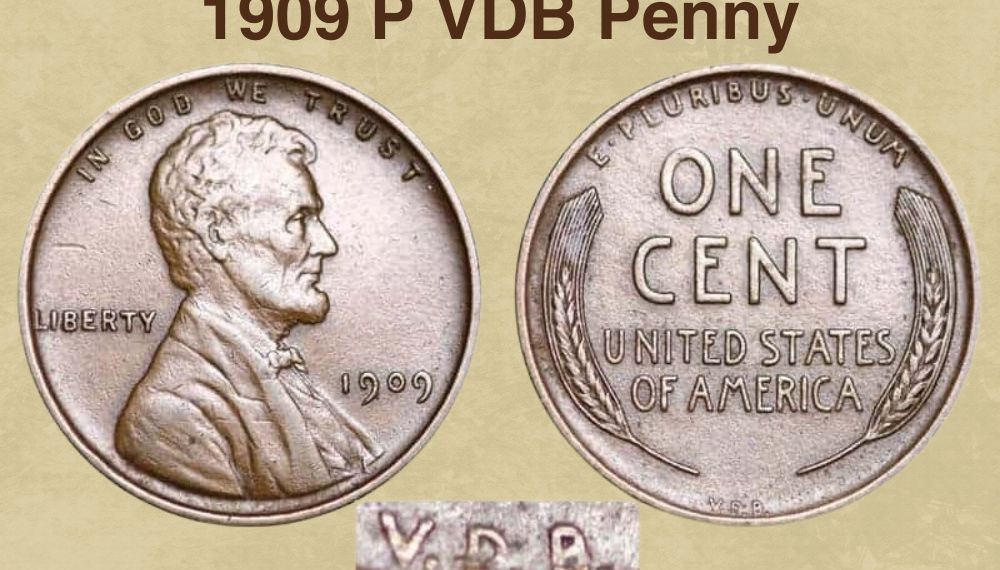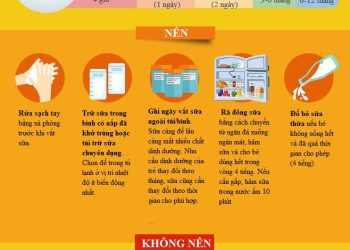The 1909 VDB penny holds significant value among collectors, with the 1909-S VDB being the rarest variety due to its limited mintage of only 484,000 coins, potentially worth thousands to over $100,000. The standard 1909 VDB without mint mark is more accessible, valued from tens to hundreds of dollars depending on condition. Error varieties like the double die obverse can substantially increase value, with red versions reaching up to $2,000. The 1909-S VDB repunched mint mark also adds premium value. While the San Francisco mint version commands higher prices, condition remains crucial for determining final worth across all varieties.
When Victor David Brenner’s initials sparked a national controversy in 1909, few could have predicted that these three letters would create one of numismatics’ most valuable penny varieties. The 1909 VDB Lincoln cent represents a fascinating intersection of history, scarcity, and collector demand that continues to command impressive prices over a century later. Understanding what separates a $30 coin from a $100,000 treasure requires knowledge of mint marks, error varieties, and grading standards that most casual collectors overlook.
The San Francisco Rarity That Changed Everything
The 1909-S VDB penny stands as the crown jewel of Lincoln cent collecting, with only 484,000 coins struck before public outcry forced the removal of Brenner’s initials from the reverse design. This microscopic mintage represents less than 1% of the 27.9 million VDB pennies produced at the Philadelphia Mint that same year, creating an immediate scarcity that collectors recognized even in 1909.
Current market values reflect this extreme rarity across all condition grades. A heavily worn 1909-S VDB in Good-4 condition typically sells for $700 to $900, while About Uncirculated examples command $1,500 to $2,200. The real value explosion occurs in mint state grades, where MS-63 specimens reach $3,000 to $4,500, and gem-quality MS-65 coins regularly exceed $15,000. The finest known examples graded MS-67+ have sold at auction for over $100,000, with a record-breaking MS-68 Red specimen fetching $168,000 in 2014.
Authentication becomes critical at these price points. Counterfeiters have added “S” mint marks to genuine Philadelphia 1909 VDB pennies for decades, making third-party grading services like PCGS or NGC essential for any coin valued above $1,000. Genuine specimens show specific die characteristics including sharp wheat stalk details and consistent letter spacing that experienced graders use to verify authenticity.
Philadelphia Mint Coins Offer Accessible Entry Points
The 1909 VDB penny without a mint mark represents the Philadelphia Mint’s production of 27,995,000 coins. While far more common than its San Francisco counterpart, these pennies still carry significant premiums over later Lincoln cents due to their first-year status and historical significance.
Value ranges span from $15 to $25 for well-circulated examples in Good-4 to Very Good-8 condition, where Lincoln’s facial features show moderate wear but remain identifiable. Extremely Fine specimens with minimal wear on the high points trade between $30 and $50, while About Uncirculated coins showing only slight friction on the highest design elements reach $60 to $90.
Uncirculated examples demonstrate dramatic value increases based on color designation and technical quality. MS-63 Brown coins typically sell for $100 to $150, while Red-Brown examples at the same grade level command $180 to $250. Full Red specimens with original mint luster intact bring $300 to $500 in MS-63, with gem MS-65 Red coins reaching $800 to $1,200. The finest MS-67 Red examples have achieved $10,000 to $15,000 at major auctions.
Collectors should note that color designation significantly impacts value for uncirculated Lincoln cents. “Red” indicates over 95% original mint color, “Red-Brown” shows 5% to 95% red surfaces, and “Brown” describes coins with less than 5% red remaining. This seemingly minor distinction can double or triple a coin’s market value.
Double Die Obverse Errors Command Premium Prices
The 1909 VDB doubled die obverse represents one of the most dramatic die varieties in the Lincoln cent series. This error occurred when the working die received a second, slightly offset impression from the hub die during production, creating visible doubling on specific design elements.
Identifying this variety requires examining the date and lettering under magnification. Genuine doubled die specimens show clear separation on the “1” in the date, with pronounced doubling visible on “LIBERTY” and “IN GOD WE TRUST.” The doubling appears strongest on the upper portions of these inscriptions, creating a distinctive shadowed effect that differs from mechanical doubling or strike doubling.
Market values for authenticated 1909 VDB doubled die obverse pennies start around $400 for circulated examples in Fine-12 condition. About Uncirculated specimens reach $800 to $1,200, while mint state examples command substantial premiums. MS-63 Red-Brown coins typically sell for $1,500 to $1,800, and full Red specimens in the same grade bring $1,800 to $2,000. Higher grade examples appear rarely at auction, with MS-65 Red coins achieving $3,000 to $4,000.
Repunched Mint Marks Add Layers of Complexity
The 1909-S VDB repunched mint mark varieties demonstrate the hand-punching process used at early 20th-century mints. Before modern technology allowed mint marks to be added to master dies, individual working dies received hand-punched “S” marks that occasionally required multiple strikes to achieve proper depth and clarity.
Several distinct repunched mint mark varieties exist for the 1909-S VDB, cataloged by their specific displacement patterns. The most valuable shows the “S” punched first too far north, then corrected with a second punch in the proper position, creating a visible secondary impression above the primary mint mark. This variety adds $200 to $500 to base values depending on condition grade.
Detecting repunched mint marks requires 10x to 20x magnification and careful examination under proper lighting. The secondary impression often appears as faint serifs or curved lines adjacent to the primary mint mark, though wear can obscure these details on circulated specimens. Professional authentication becomes worthwhile for any suspected variety on coins grading Fine or better.
Grading Standards That Determine Thousands in Value
Understanding the Sheldon grading scale proves essential for accurately assessing 1909 VDB penny values. This 70-point system ranges from Poor-1 to Perfect Mint State-70, with specific criteria defining each grade level based on wear patterns and surface preservation.
For circulated grades, key diagnostic points include Lincoln’s cheekbone, jaw line, and hair details. Good-4 specimens show a flat cheek with merged hair lines, while Fine-12 coins retain separated hair strands but show wear on the cheekbone. Extremely Fine-40 examples display sharp hair definition with only slight high-point wear, and About Uncirculated-50 coins show friction rather than actual wear on less than 50% of the design.
Mint state grading focuses on contact marks, luster quality, and strike sharpness rather than wear. MS-60 represents the lowest uncirculated grade with noticeable bagmarks and potentially weak luster. MS-63 shows fewer marks with good luster, while MS-65 displays minimal contact marks visible only under magnification and strong, original luster. Gem grades MS-65 and higher can multiply values by five to ten times compared to MS-60 specimens.
Authentication Resources Every Collector Needs
Before investing significant money in 1909 VDB pennies, collectors should utilize professional grading services and reference materials. PCGS and NGC remain the industry standards, providing tamper-evident holders with grade guarantees and population reports showing rarity within specific grade levels.
The PCGS CoinFacts database and NGC Census reports offer free access to auction records, population data, and high-resolution images of certified examples. These resources help collectors understand market values and identify grade-appropriate coins. For variety attribution, the CONECA website provides detailed images and descriptions of doubled dies, repunched mint marks, and other collectible errors.
Physical references including “The Complete Guide to Lincoln Cents” by David Lange and “Cherrypickers’ Guide to Rare Die Varieties” offer comprehensive coverage of 1909 VDB varieties with diagnostic photographs. These books typically pay for themselves by helping collectors avoid counterfeits or correctly identify valuable varieties that dealers might overlook.









How much is a 1909 VDB penny worth with no mint mark?
A 1909 VDB penny with no mint mark is worth between $12 and $75 or more, depending on its condition. While circulated coins can be worth around $12 to $15, the value increases significantly for higher-grade coins, with uncirculated examples being worth $100 to $150 or much higher for top-grade red examples.
What is the error on the 1909 VDB penny?
A 1909 VDB penny error refers to a mistake on the coin, most commonly a double-die obverse, which can significantly increase its value. Other errors include off-center strikes, lamination flaws, and clipped planchets. The double-die error is especially sought after by collectors and is identifiable by a doubling of letters, particularly in “LIBERTY” and the date “1909”.
Is a 1909 S penny worth anything?
A 1909 S penny can range in value from approximately $100 for a coin in poor condition to over $10,000 for a top-grade example, with the specific value depending heavily on the coin’s condition and whether it includes the “VDB” initials. The “S” mint mark on the 1909 Lincoln wheat cent makes it a highly collectible and valuable coin. A 1909-S VDB is a rarer and more valuable coin than a 1909-S without the VDB initials.
Which VDB penny is worth money?
The 1909-S V.D.B. Lincoln penny is the most valuable V.D.B. penny, considered the “holy grail” of Lincoln cents due to its extremely low mintage and the prominence of designer Victor David Brenner’s initials on the reverse. While a regular 1909 V.D.B. penny is still valuable, the San Francisco-minted “S” version is significantly rarer and more desirable. The value of a 1909-S V.D.B. penny depends heavily on its condition, with uncirculated examples and those graded red (RD) in color fetching …